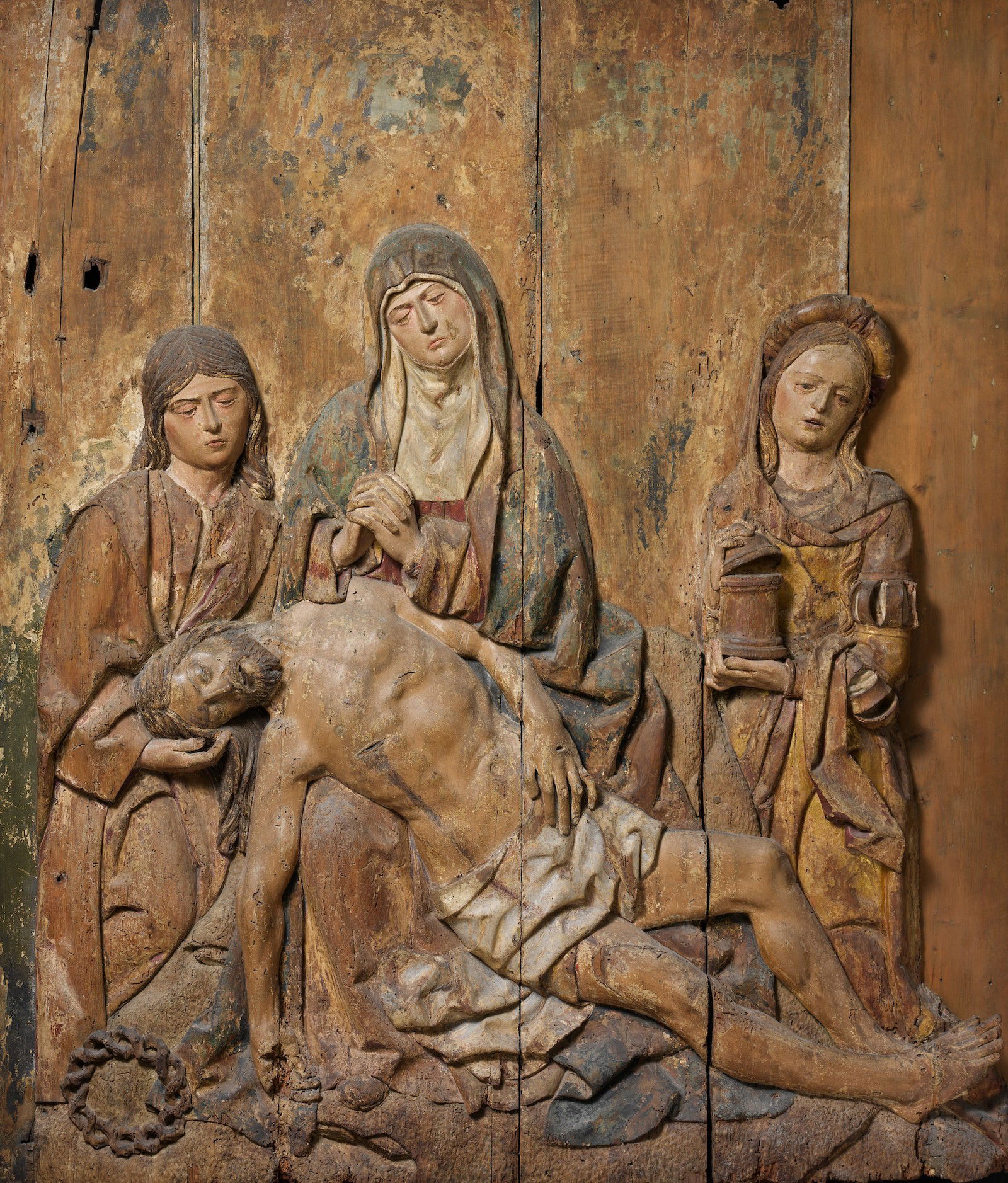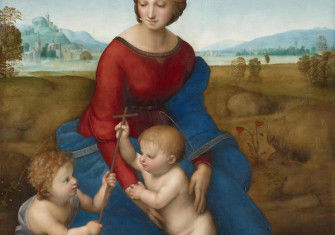Mary Magdalen and the Merovingian Kings of France
The Holy Blood and the Holy Grail and Dan Brown’s Da Vinci Code both drew from pseudohistory linking France’s Merovingian dynasty to the bloodline of Jesus Christ.

The Da Vinci Code, millions of people who have read Dan Brown’s novel or seen the film know – or at least think they do – who this ‘Dark Age’ dynasty was. And they ‘know’ that Mary Magdalen apparently married Jesus, and bore his child, their descendants marrying into the French royal line and, after several generations, engendering the Merovingian dynasty. (In the 7th century, according to Brown’s book, the Vatican attempted to eradicate the dynasty by murdering Dagobert II, but his son Sigisbert II survived, as did his bloodline down through history, ending up with Sophie – Sophia, Greek for wisdom, and Mary Magdalen’s alter ego in the Pistis Sophia, a Gnostic text – heroine of the novel.) The ‘historical’ aspects of this tale were first told in The Holy Blood and The Holy Grail (1982), by Michael Baigent, Richard Leigh and Henry Lincoln.
According to Luke’s Gospel (8:2), Mary of Magdala was the leader of the group of Jesus’s women followers, and had been healed; she was present at the crucifixion and, according to John and Mark, was the first to witness the risen Christ. In the commentaries of the Early Church Fathers her gospel figure became conflated with a nameless sinner in Luke, who wept on Christ’s feet, wiping them with her hair and anointing them with spikenard (7:37-50), and Mary, sister of Martha and Lazarus of Bethany (John, 11-12). This composite identification was disputed by Protestants from the 16th century, but it was only in 1969 that the Church of Rome distinguished the three separate figures. Baigent et al retain the link between Mary of Magdala and Mary of Bethany with specious and unhistorical arguments regarding the possible wife of Jesus. She was not however a whore.
The Holy Blood and the Holy Grail uses the Gnostic texts of the Gospel of Mary, where Mary Magdalen is described as being loved by Jesus more than the other women and disciples, and the Gospel of Philip, which contains the symbolic imagery of the bridal chamber, to reinforce its hypothesis of a marriage between Christ and Mary Magdalen; The Da Vinci Code does the same.
The Holy Blood and the Holy Grail suggests that Jesus may have survived the crucifixion, and that Mary Magdalen, pregnant at that event, may have fled to France where she was protected by a Jewish kingdom at Narbonne. It continues:
According to other accounts, the Grail was brought by the Magdalene to France. As early as the 4th century legends describe the Magdalene fleeing the Holy Land and being set ashore near Marseilles – where for that matter, her purported relics are still venerated.
Further, ‘according to medieval legends, she carried with her to Marseilles the Holy Grail. But the early legends say that the Magdalene brought the Grail into France, not a cup. In other words, the simple association of Grail and cup was a relatively late development’. We are then tantalized by another suggestion: that ‘If our hypothesis is correct’, the Holy Grail would have been both ‘Jesus’s bloodline and descendants – the ‘Sang Raal’ ... of which the Templars, were ...[the] guardians; and the receptacle or vessel containing Jesus’s blood, the womb of Mary Magdalen’. The Da Vinci Code is of the same view.
The veracity of these hypotheses should be taken with a large dose of salt. There are no accounts or medieval legends of the Grail being brought by Mary Magdalen to France. The earliest legend of her fleeing the Holy Land is of the 13th century. The earliest account of Mary Magdalen’s post-Ascension life appears in an Anglo-Saxon martyrology of c. 850, in which she retires as a hermit, hidden away in sorrow and love of Christ in a desert cave, a story that derives from the legend of the 5th-century penitent harlot St Mary of Egypt, who went into the desert to repent of her sins, naked to reject her worldly life, her hair growing down to cover her. As Mary Magdalen dies, a priest gives her the last rites and buries her. By the 11th century, this legend, known later as the Vita eremitica beatae Mariae Magdalenae (‘Eremitical life’) had become widespread, and Mary Magdalen’s legend became one of the best-known saints’ vitae, after the abbey of Vézelay in Burgundy claimed to possess her relics in 1050.
Monsignor Victor Saxer (b.1918), doyen of Magdalenian scholarship, has traced the development of the legends. To the question of how her body had arrived in Gaul, the faithful were informed that it had been through the love of all-powerful God. Before long, however, Vézelay had to come up with something more concrete to explain its possession of the relics: this was the classic holy theft whereby various versions told of how a monk from Vézelay had been sent to near Aix to retrieve her body where it had been buried, before the Saracens invaded, and brought it back to the abbey for safe-keeping. The next step of the story related how the body had actually come to Provence. This was the vita apostolica, or apostolic life of Mary Magdalen, elements of which have been used in The Holy Blood and the Holy Grail. Here Mary Magdalen and various companions, including one Maximinus, landed at Marseille, where they preached the gospel. Mary Magdalen converted the local prince and his wife to Christianity, and performed miracles such as helping the previously childless couple to conceive (thus becoming a patron saint of childbearing), and restoring the princess to life after being shipwrecked. In a later version, what The Holy Blood and the Holy Grail refers to as ‘according to tradition, as well as certain early Church writers’ and appears to treat as fact, she is accompanied by Martha and Lazarus, having been put to flight by the Jews in a leaky and rudderless vessel, which guided by God, also, arrives at Marseille – Martha goes to Tarascon to kill the wicked dragon, while Lazarus stays to become bishop of Marseille.
The story is resumed in the compilation known as the Golden Legend by Jacobus de Voragine of 1276. All hagiographical material issued by one small Burgundian abbey, which prompted, as intended, a massive pilgrimage industry, particularly after the invention or discovery in 1259, of heaps of feminine hair (something that would to the medieval mentalité confirm that the body was indeed that of Mary Magdalen). Then, in 1279, through the intervention of Mary Magdalen herself in a dream, the monks at St Maximin in Provence ‘discovered’ her relics in their church, turning the steps of the credulous faithful southwards. The instigator of the discovery of the Magdalen’s relics at St Maximin was Charles of Anjou and Salerno, count of Provence.
So where do the Merovingians come in? Nowhere. In The Holy Blood and the Holy Grail we learn that:
‘If our hypothesis is correct, … after fleeing the Holy Land, Jesus’s wife and offspring found a refuge in the south of France, and in a Jewish community they preserved their lineage. During the 5th century this lineage appears to have intermarried with the royal line of the Franks, thus engendering the Merovingian dynasty.’
There is no footnote to this amazing leap in historical speculation, although the occasional fact is referred to such as the assassination of Dagobert II in 679, and that ‘despite all efforts to eradicate it, Jesus’s bloodline – or at any rate, the Merovingian bloodline – survived ... in part through the Carolingians, … who sought to legitimise themselves by dynastic alliance with Merovingian princesses’. Hard on the heels of The Holy Blood and the Holy Grail, Dan Brown follows.
Nor is there any link between Mary Magdalen and the French bloodline, as hypothesized by the authors of The Holy Blood and the Holy Grail when they state that Louis XI (r.1461-83) regarded ‘the Magdalene as a source of the French royal line’, citing Sainte-Marie Madeleine (1860) by the Dominican H.D. Lacordaire, an apologist for the claims of St Maximin and the veracity of Mary Magdalen’s sojourn in Provence. Either their French is bad or it is yet another instance of imagination running riot, for Lacordaire merely noted that the king was an ‘example of limitless veneration’ for Mary Magdalen, ‘treating her as a daughter of France’, and endowing his descendants ‘with a pilgrimage proper to the French monarchy’. While it is true that the French monarchy, from Louis IX (r.1226-70), who attended the inventions both at Vézelay and St Maximin, to Francis I (r.1515-47), in particular, down to the 18th century, first supported and endowed Vézelay and then did the same for the convent at St Maximin and pilgrimage site at La Ste-Baume, it was not only the French royal house that did so.
Royalty and nobility, as well as humbler pilgrims, from all over Europe came to the shrine of the most popular saint of Christendom after the Virgin Mary: among them Francis I, the emperor Charles V, his daughter-in-law Beatrice of Savoy, and princes such as Isabella d’Este, while several females of dynastic descent had themselves portrayed as the penitent in her grotto, such as the Archduchess Maria Magdalena of Tuscany in 1621.
Finally, it is interesting to note that after the loss to France of the duchy of Burgundy in 1477, the Burgundian Hapsburgs used the legendary apostolic life of Mary Magdalen to claim their prior right to the duchy. A manuscript of c.1486 now in the British Library, purporting to be a history of the house of Burgundy, states that Mary Magdalen converted their forebears, the king and queen of Burgundy (altering what in the legend had been the prince and princess ‘of the province’, or Provence), to Christianity. With the addition at the beginning of two apocryphal names, Trophime and Etienne (the king and his son), is a genealogical list that would have done The Holy Blood and the Holy Grail proud: Chilperic I and Sigismond IV of Burgundy, Clovis I, king of the Franks, converted by his wife Clothilde (of the Burgundian house which, according to the partisan historiographer was Christian ‘long before there was a Christian king in France’), and Theuderic II, ending with the Archduke (later Holy Roman Emperor) Maximilian I (r.1477-82), and his son Philip the Handsome (r.1482-1506), father of Charles V.
Baigent and Leigh’s recent case in the High Court against Dan Brown failed since using material both factual and in the public domain is not plagiarism. Had they claimed the stuff of their book to have been the authors’ own invention, they might have got somewhere. That the central pivot to both The Holy Blood and the Holy Grail and The Da Vinci Code was a fiction could well have been established by the lack of connection between Mary Magdalen, Marseilles and the Merovingians.
Susan Haskins is the author of Mary Magdalen: Myth and Metaphor (HarperCollins, 1993).






